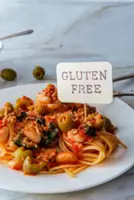The worst damage to a person’s cholesterol balance happens via foods containing trans-fats like fried food. — VALERIYA/Pexels
There is a common organic molecule that is often vilified, even though the human body cannot survive without it. This is curious as this molecule is a fundamental building block of all human cell membranes and is present in every organ. It is also involved in producing various important hormones, enzymes and other compounds in bile, vitamin D creation (through our skin’s exposure to sunlight), and the proper neurological functioning of the brain.
You know this compound as Cholesterol (the Big C), and despite the well-publicised link between cholesterol and blocked arteries, the reality is cholesterol is absolutely required for blood to flow smoothly through blood vessels. Without cholesterol, blood would not be able to move properly due to the resulting degraded structures of blood vessels.
What we know about cholesterol
Firstly, cholesterol is REALLY important for the human body. It is a lipid (fat) molecule used as the building block for many important steroid hormones, such as glucocorticoids (used for stress response and regulating metabolism), mineralocorticoids (electrolytes and water balance), sex steroids (testosterone, estrogens and progestins), and adrenal androgens (tissue development and replenishment). Additionally, vitamin D production by the body uses cholesterol as its elementary component.
The brain is the most cholesterol-dense organ in the body, containing about 20-25% of total body cholesterol, despite making up only about 2% of total body weight. Cholesterol also makes up 2.3% by weight of the rest of the Central Nervous System.
The enzymes within bile are mostly derived from cholesterol, and these enzymes are crucial for the digestion of various foods, particularly fats.
And then there is oxysterol, which is an oxidized form of cholesterol. Oxysterols are used for regulating the synthesis of cholesterol within the body by modulating various enzymes involved in the creation of cholesterol. Around 80% of the cholesterol needed by the body is created in the liver, with the balance produced by the brain, adrenal glands, and reproductive organs. Almost all human tissues can synthesize cholesterol from acetyl-CoA, a molecule derived from carbohydrate metabolism and the breakdown of fatty acids after digestion.
Hence there is no need for humans to ingest more cholesterol on top of a balanced diet. However, many animal proteins/fats inherently contain cholesterol, which is used by human bodies to augment the amounts produced internally. In healthy individuals, there are no issues with eating cholesterol-rich foods as excess cholesterol is readily removed from the bloodstream (usually by the liver) via processes such as bile creation, biliary excretion (dumping cholesterol into bile), and other mechanisms too complex to elaborate here.
What is cholesterol anyway?
To answer this question, it would be helpful to understand the three different types of cholesterol.
Low-Density Lipoproteins (LDL) – these are the main carriers of cholesterol lipids going into tissues and organs in the body, and are considered “bad” cholesterol
High-Density Lipoproteins (HDL) – these regulate excess cholesterol lipids (including bad cholesterol) by carrying them away from tissues and organs back to the liver for excretion and therefore act as “good” cholesterol
Very Low-Density Lipoproteins (VLDL) – these are carriers of triglycerides (fats derived from the metabolism of excess sugars and carbohydrates) around the bloodstream. After some time, a tissue enzyme called lipoprotein lipase eventually degrades VLDL into LDL. These are also regarded as “bad” cholesterol.
There are normally poorer health outcomes over the long term if blood LDL levels persistently exceed 100 mg/deciliter, if VLDL levels are consistently above 30 mg/deciliter, and especially if HDL is also below 60 mg/deciliter.
Certain people may have genetic variations that can tolerate extreme levels of “bad” cholesterol, but the average human would generally run higher risks of strokes and cardiovascular events if their blood tests above the levels of bad cholesterol mentioned, and/or if their good cholesterol is below the target value.
Why the bad press?
Bad cholesterol is responsible for arterial plaque formation (atherosclerosis), which can cause heart attacks and strokes. This is because they are more easily oxidized, which makes them “sticky” in the arteries. Also, they trigger inflammation, which can narrow the arteries. Bad cholesterol molecules are smaller but denser and always go in one direction towards tissues and organs, thereby causing build-ups as they flood into blood vessels.
So to be clear, when people say that cholesterol is “bad”, what they really mean are the LDL and VLDL molecules, and not HDL.
Therefore, for cholesterol to become a health issue, it requires a persistent excess of LDL and VLDL combined with relatively low amounts of HDL in the body. This situation may arise due to genetics, illnesses, the effects of aging, or more commonly these days, poor dietary habits.
There is a strong link between bad dietary habits and some diseases that can affect the cholesterol profile in a body, such as Type 2 diabetes, liver diseases, gout, etc. These diseases are linked to metabolic syndrome, probably the most common human malady on the planet.
The worst damage to a person’s cholesterol balance normally happens via the consumption of foods containing trans-fats, an artificially created ingredient found in many ultra-processed foods. Another possibly even more prominent source of trans-fats is vegetable oils which have been heated to high temperatures, especially polyunsaturated oils.
The fats in such oils degrade into trans-fats via a process called isomerization as the heat deforms the molecules of plant fats into unnatural molecular structures. Vegetable oils which have been re-used several times for frying are particularly unhealthy in terms of trans-fats.
Trans-fats are unhealthy because they activate a biochemical cascade via a receptor called “PGC-1beta” in the liver, causing an increased production of bad cholesterol. Another problem is that trans-fats stimulate SBREP2 receptors found in the liver and fat tissues in the body, causing the synthesis of abnormally large amounts of bad cholesterol, while lowering good cholesterol levels at the same time. Other worrying effects of trans-fats are impaired clearance of excess cholesterol, detrimental changes to the way the liver stores fats, and the promotion of inflammation around the body.
Trans-fats may have these impacts because they are artificially produced fats that do not exist in nature, and the body does not know how to manage them appropriately.
Saturated fats can also cause an increase in LDL, but they are not known to decrease HDL levels or impair the excretion of excess cholesterol, unlike trans-fats. But if one has any suspected issues with LDL, then note that compared to unsaturated fats, saturated fats raise LDL by 6%. With trans-fats, it is worse as they cause an 8.4% increase in LDL, or 40% more than for saturated fats, along with a reduced HDL count.
The implications are clear. Even in normal, healthy people, bad cholesterol levels can develop into a potentially serious problem if people persevere with poor dietary habits involving the overconsumption of trans-fats. A bad cholesterol profile may also arise from the persistent overeating of saturated fats, though this is less likely in healthy people.
If one suspects problems with bad cholesterol levels, please always consult a doctor. In the meantime, dietary changes may help, such as avoiding fried foods and eating foods with lots of soluble fibre. Cholesterol tends to bind with soluble fibre in the digestive system, thereby interfering with absorption, thus helping to remove it from the body.
Foods with high soluble fibre content include oats, barley, legumes, vegetables, flaxseed, etc. A suggested target may be 10 grams of soluble fibre daily. Also, daily supplements of around 15 grams of powdered psyllium have been linked to lowering LDL levels by over 20%.
GOD
This is not a spiritual topic as GOD here refers to the Generator Of Diversity function within the Adaptive Immune System (AIS) in humans. The AIS is involved in conferring immunity to pathogens via past infections or vaccinations, but few people are aware that it is enhanced by 3 additional processes which increases the effectiveness of the AIS against future unknown pathogens (which may be similar to the original target pathogens).
The major and first process is VDJ Recombination, which involves random recombinations of different gene segments in the AIS receptors (or detectors of pathogens). These gene segments are broken down into Variable (V), Diversity (D), and Joining (J) segments and the random combinations create new unique receptor genes. This process allows a relatively small number of genes to produce an enormous variety of “antigen receptors” which can target currently unknown but similar pathogens.
The second process is called Somatic Hypermutation, which introduces random mutations in the genes for creating antibodies (or killers of pathogens). These mutations can result in antibodies with improved targeting for pathogens.
The third process is Combinatorial Diversity, where various complex and simple gene chains in receptors and antibodies are recombined randomly, further increasing the diversity of pathogens that may be targeted and destroyed.
Statistically, GOD allows each human to develop 10 million permutations of antibodies and 100 million variations of receptors. However, as a species, humans can produce over 1 trillion antibody permutations and over 1 quadrillion permutations of receptors. As such, GOD has ensured that at least a few humans will always be likely to be able to survive any kind of unknown or novel pathogen.
To improve the odds of better GOD-modulated immune defences in individuals, a proper diet with adequate quantities of the nutrients required by the AIS is important. These include, in no particular order, Vitamins A, C, D, E, arginine, zinc, Omega-3 fats plus lots of dietary fibre and probiotics (gut bacteria) for improving gut health.
The views expressed here are entirely the writer’s own.








